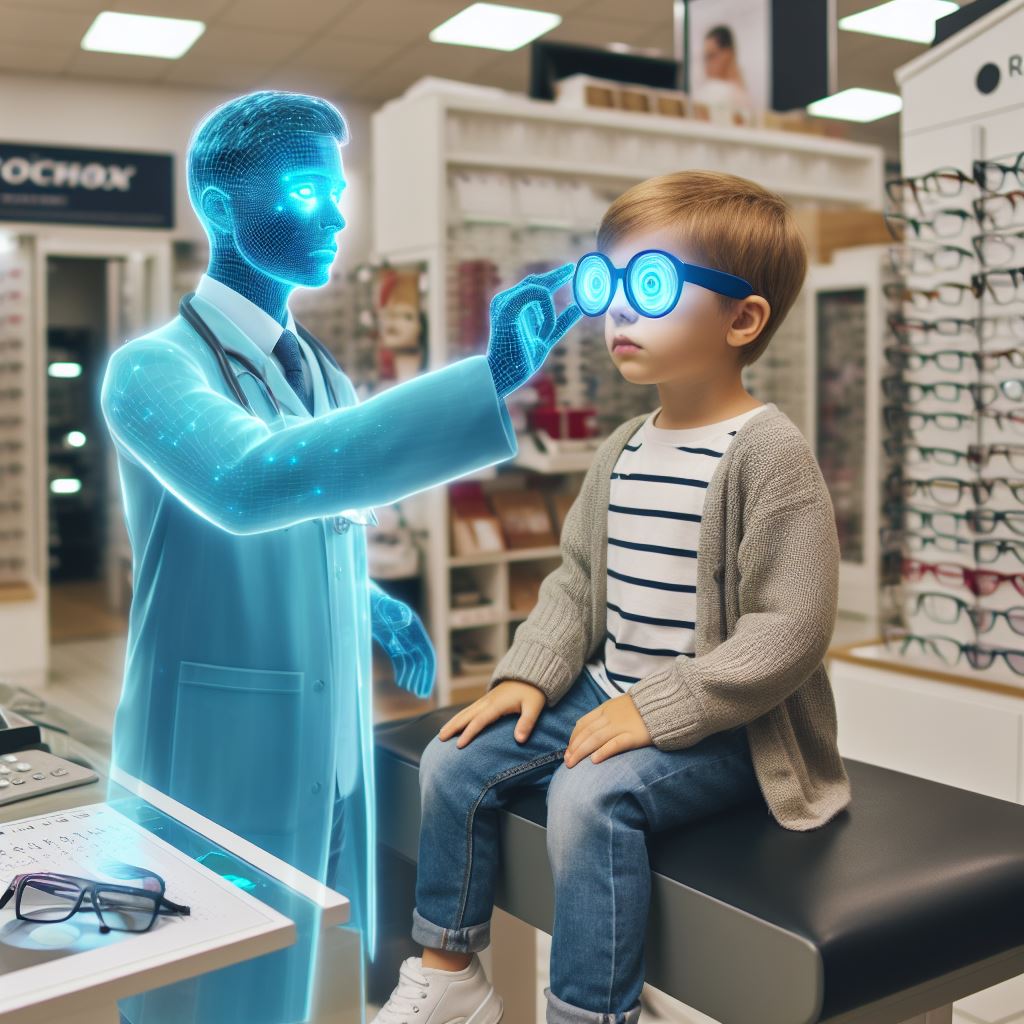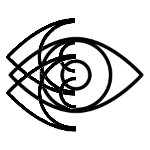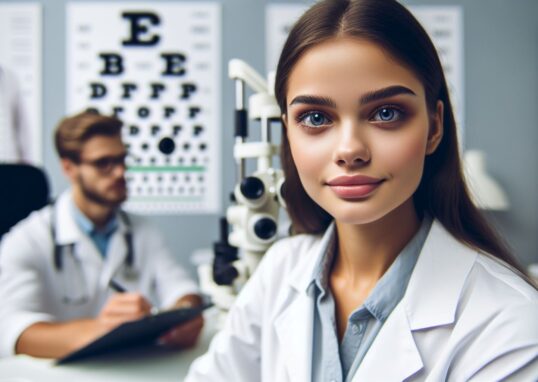
Introduction to Amblyopia
Amblyopia, commonly known as ‘lazy eye,’ is a vision disorder that primarily affects children. It results in reduced best-corrected visual acuity (BCVA) in one or both eyes, which cannot be solely attributed to structural abnormalities of the eye. The condition develops during childhood and disrupts normal cortical visual pathway development.
Key points about amblyopia:
- Clinically defined as a difference of 2 or more lines of acuity between the eyes.
- Abnormal visual processing in the primary visual cortex (V1) leads to reduced visual acuity and contrast sensitivity.
- Common causes include uncorrected refractive errors, strabismus (misalignment of the eyes), and central visual axis obstruction.
- Treatment involves addressing the underlying cause and penalizing the sound eye during the critical period of brain plasticity.
- Traditionally, treatment was recommended for children up to 8–9 years of age, but recent studies suggest success in older individuals.
Prevalence of Amblyopia: Worldwide prevalence ranges from approximately 1% to 5%. The World Health Organization estimates that 19 million children under 15 years of age have visual impairment, with 12 million affected by uncorrected refractive errors and amblyopia (American Academy of Ophthalmology).
Amblyopia and Race in the United States: Race analysis among Head Start preschool children found similar prevalence rates of amblyopia across different racial/ethnic groups. Hispanics had higher rates of astigmatism and anisometropia, while non-Hispanic whites had the highest hyperopia rate (American Academy of Ophthalmology).
Etiology and Risk Factors: Amblyopia can result from uncorrected refractive errors, strabismus, visual axis obstruction, or a combination of these factors. The VIP study group identified risk factors associated with amblyopia, including strabismus, hyperopia (≥2.0 diopters), astigmatism (≥1.0 diopter), and anisometropia (≥0.5 diopter) (American Academy of Ophthalmology).
Socioeconomic Impact: Amblyopia has significant implications for public health. While it does not directly affect educational, employment-related, or economic outcomes, it can impact overall well-being and quality of life. Patients undergoing treatment should be informed about long-term outcomes (UK Biobank).
Current Diagnostic Methods
The diagnosis of amblyogenic conditions, including amblyopia, currently relies on screening by orthoptists and/or ophthalmologists. These professionals play a crucial role in identifying and managing vision disorders. Let’s explore the relevant aspects:
- Orthoptists:
- Orthoptists are highly trained allied health professionals who specialize in assessing and managing eye movement disorders, binocular vision problems, and amblyopia.
- They work closely with ophthalmologists to provide comprehensive eye care.
- Orthoptists perform tasks such as visual acuity testing, ocular motility assessment, and identifying risk factors for amblyopia.
- Citation: The Current Role of Orthoptists: A Systematic Review
- Home-Based Screening Tools:
- Advancements in technology have led to the development of home-based screening tools for amblyopia.
- These tools allow early detection by laypersons in the community, especially during pandemic-related restrictions.
- Assessing their accuracy and reliability compared to the gold standard (orthoptist/ophthalmologist screening) is essential.
- Citation: Home-based screening tools for amblyopia: a systematic review protocol
- Extended Roles:
- Orthoptists have extended their practice beyond core competencies to take on roles traditionally performed by ophthalmologists.
- For example, some orthoptists participate in pre- and post-assessment of cataract patients.
- Citation: Extended and Advanced Roles in Orthoptics
Home-Based Screening Tools for Amblyopia
Home-based screening tools for amblyopia have gained prominence due to their potential to detect vision disorders early, especially during pandemic-related restrictions. Here, we delve into the outcome measures associated with these tools:
- Diagnostic Accuracy:
- The primary outcome measure is the diagnostic accuracy of home-based screening tools.
- Assessing how well these tools identify amblyogenic conditions compared to the existing gold standard (orthoptist/ophthalmologist screening).
- Citation: BMJ Open
- Validity:
- Evaluating the validity of home-based screening tools in correctly identifying amblyopia.
- Understanding their ability to distinguish true cases from false positives/negatives.
- Citation: Nature
- Feasibility:
- Assessing the practical feasibility of implementing home-based screening tools in community settings.
- Considering factors such as ease of use, accessibility, and acceptance by laypersons.
- Citation: ResearchGate
- Reproducibility:
- Examining the consistency of results obtained from home-based screening tools across different settings and populations.
- Ensuring that the tools yield reliable outcomes.
- Citation: International Journal of Behavioral Nutrition and Physical Activity
- Cost-Effectiveness:
- Considering the economic impact of implementing home-based screening tools.
- Comparing costs associated with these tools to the benefits of early detection and reduced community screening burden.
- Citation: American Academy of Ophthalmology
Technological Advances in Detecting Amblyopia
As technology evolves, it plays a crucial role in enhancing our ability to detect and manage amblyopia. Let’s explore some recent technological advancements:
- Neural Performance Scanning (NPS) Technology:
- Neural Performance Scanning uses proprietary Retinal Polarization Scanning technology to measure bilateral fixation via the fibers of the fovea. Many life-altering diseases such as lazy eye and TBI are associated with impaired brain function, and because there are so many barriers to early detection, they often go undiagnosed and untreated at critical stages where early intervention can reduce life-long hardship for those affected. Rebion’s Neural Performance Scanning (NPS) makes wide-scale, early intervention feasible by definitively detecting impaired brain function, fast and effectively. Using a portable low-power laser to scan retinal nerve fibers, NPS precisely measures signal patterns that return from the brain, instantly determining if faulty signal processing is present. Patients can be confidently referred for further diagnosis and treatment, improving health outcomes and reducing treatment costs.
- Citation: Rebion Technology
- Optical Tracking for Detecting Fixation Abnormalities:
- Eye tracking metrics have been used to screen and assess cognitive impairment in patients with neurological disorders.
- Eye movement analysis aids in evaluating cognitive function in conditions such as amyotrophic lateral sclerosis (ALS), Alzheimer’s disease (AD), Parkinson’s disease (PD), multiple sclerosis (MS), and epilepsy.
- Eye tracking provides a sensitive quantitative method with high temporal and spatial resolution.
- Citation: Neurological Sciences
- Automated Devices:
- Automation technologies, driven by the need to reduce physical contact during the covid-19 pandemic, are playing a role in detecting risk factors associated with proximity.
- Telemedicine, for instance, reduces the need for ancillary staff and increases the role of automation in healthcare delivery.
- Citation: The BMJ
Telemedicine and Amblyopia
Telemedicine is the use of information and communication technologies to provide health care services remotely. It can improve access, quality, and efficiency of health care delivery, especially for patients in rural or underserved areas. Telemedicine has been applied to various fields of ophthalmology, including glaucoma, diabetic retinopathy, and age-related macular degeneration. However, one of the most suitable diagnoses for telemedicine is amblyopia, a common vision disorder that affects children and can lead to permanent vision loss if untreated.
Challenges and Opportunities in Transferring Ophthalmology to Telemedicine
Ophthalmology is a challenging specialty to transfer to telemedicine due to the reliance on in-person examinations of the patient’s eye, retina, and measuring their glasses prescription. However, technological advancements have enabled the development of devices and software that can facilitate remote diagnosis and management of eye diseases. Some of the challenges and opportunities for telemedicine in ophthalmology are:
- Challenge: Ensuring the quality and safety of telemedicine services, such as data security, privacy, and confidentiality.
- Opportunity: Developing standards and guidelines for telemedicine practice, such as accreditation, certification, and quality assurance.
- Challenge: Overcoming the barriers to telemedicine adoption, such as cost, infrastructure, regulation, and reimbursement.
- Opportunity: Demonstrating the cost-effectiveness and value of telemedicine services, such as reducing travel time, improving patient satisfaction, and enhancing health outcomes.
- Challenge: Addressing the ethical and legal issues of telemedicine, such as informed consent, liability, and malpractice.
- Opportunity: Establishing a clear and consistent legal framework for telemedicine, such as licensure, jurisdiction, and teleprescribing.
- Citation: (The Lancet)





